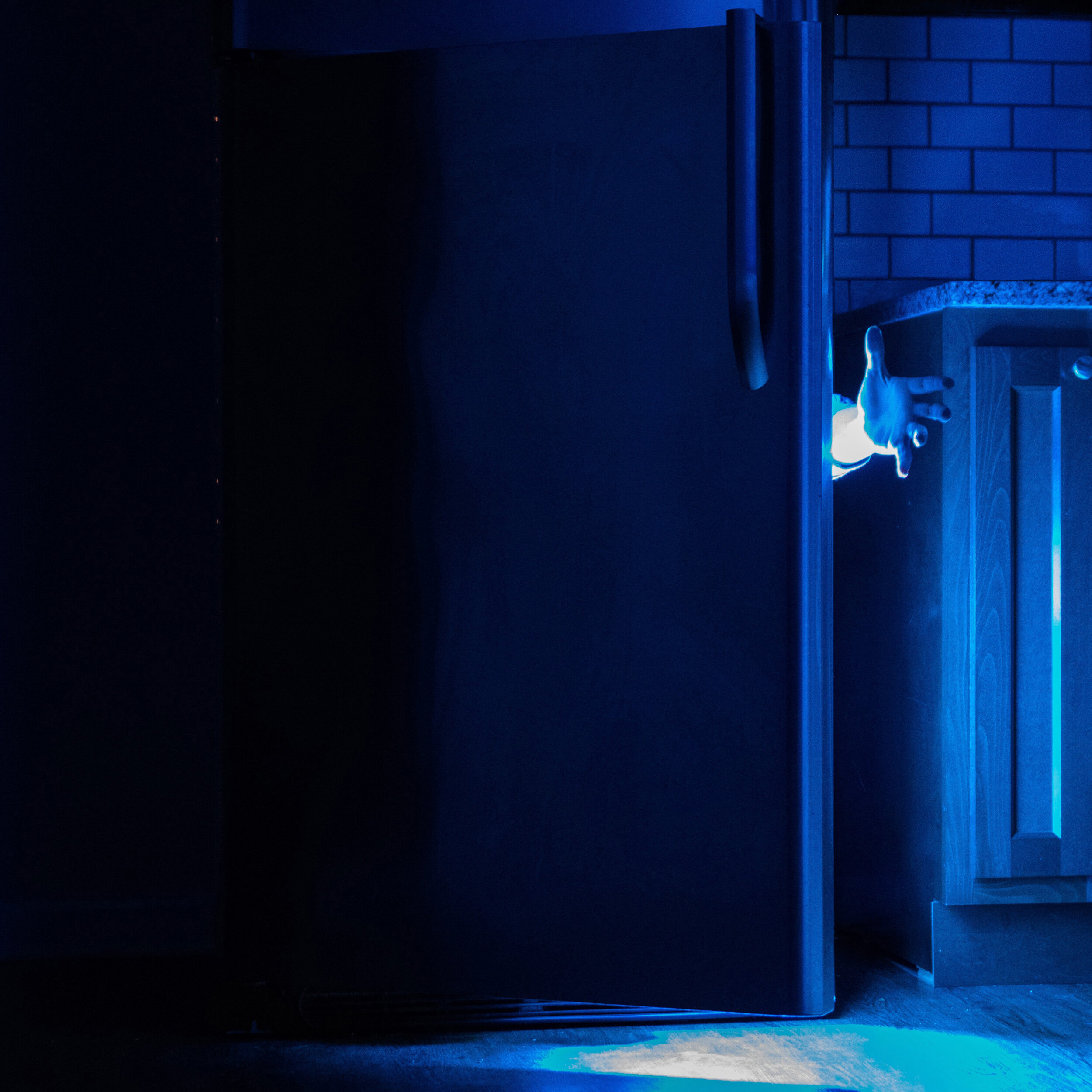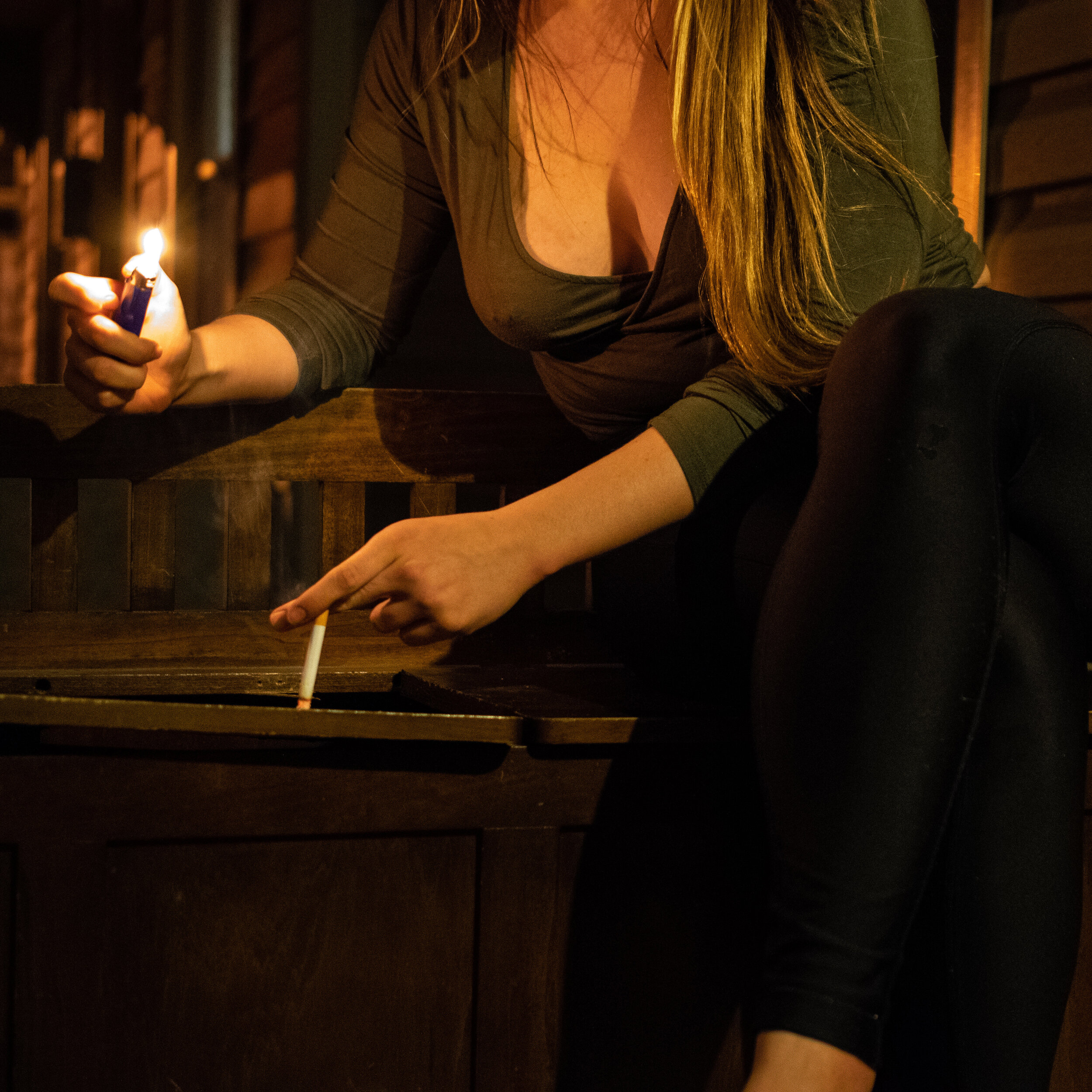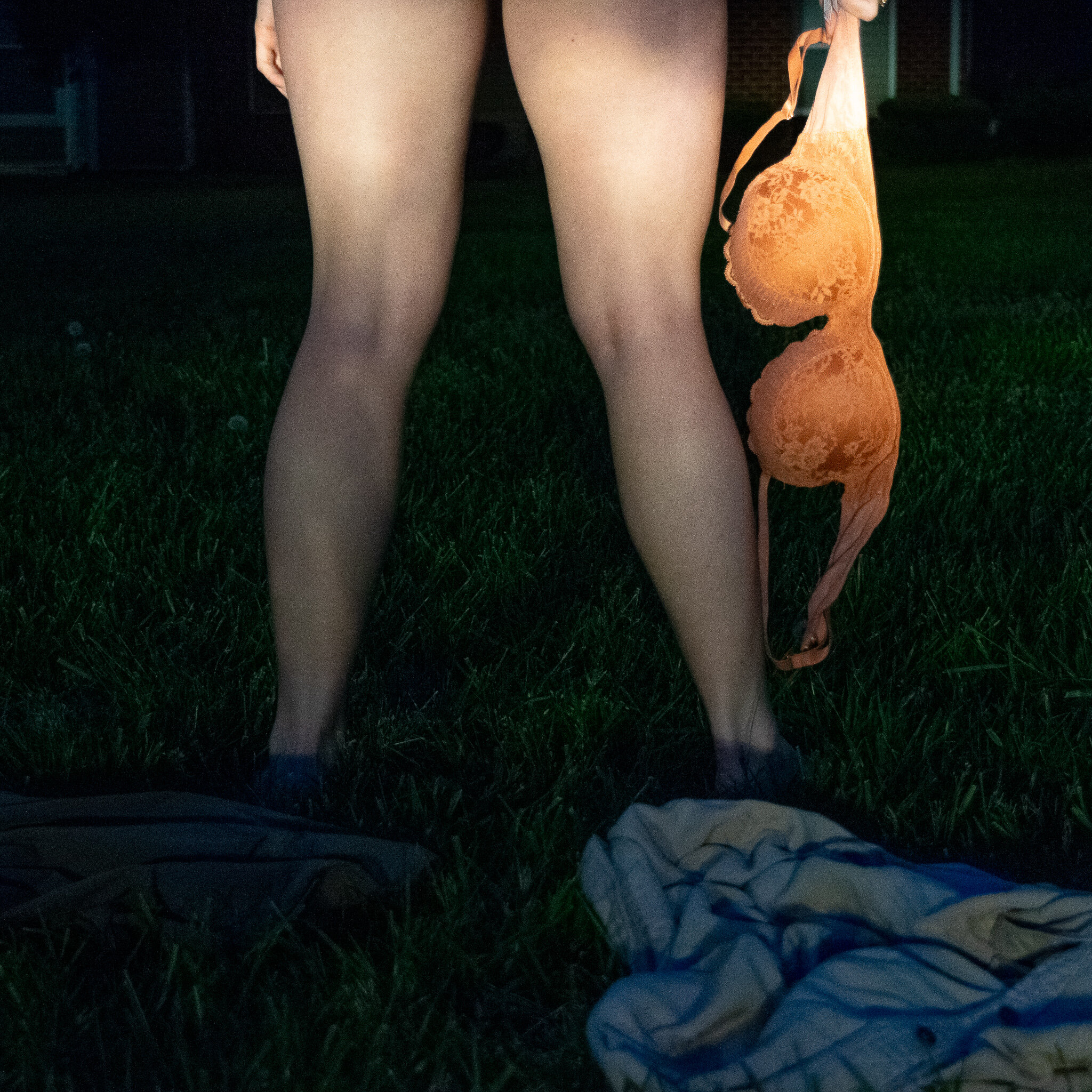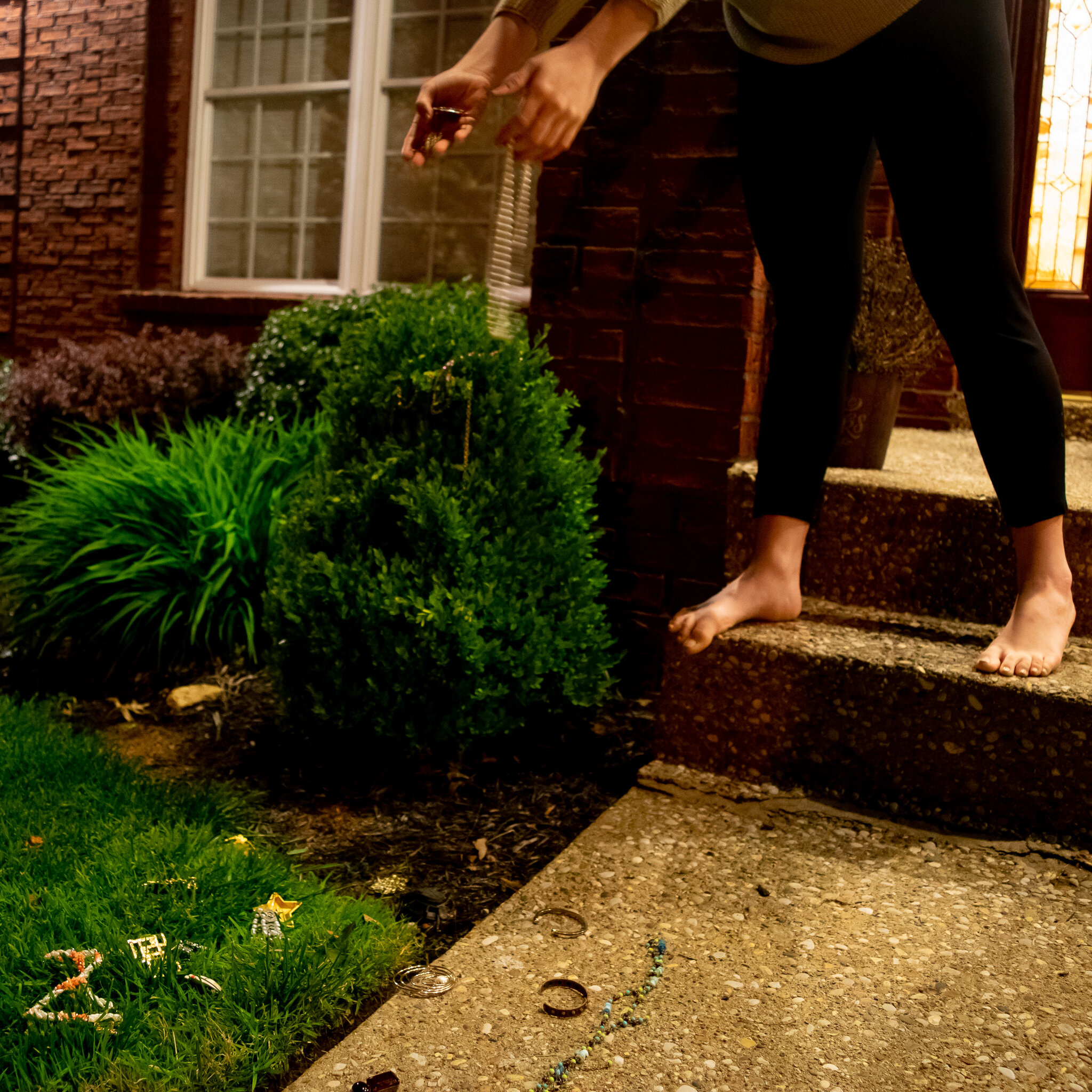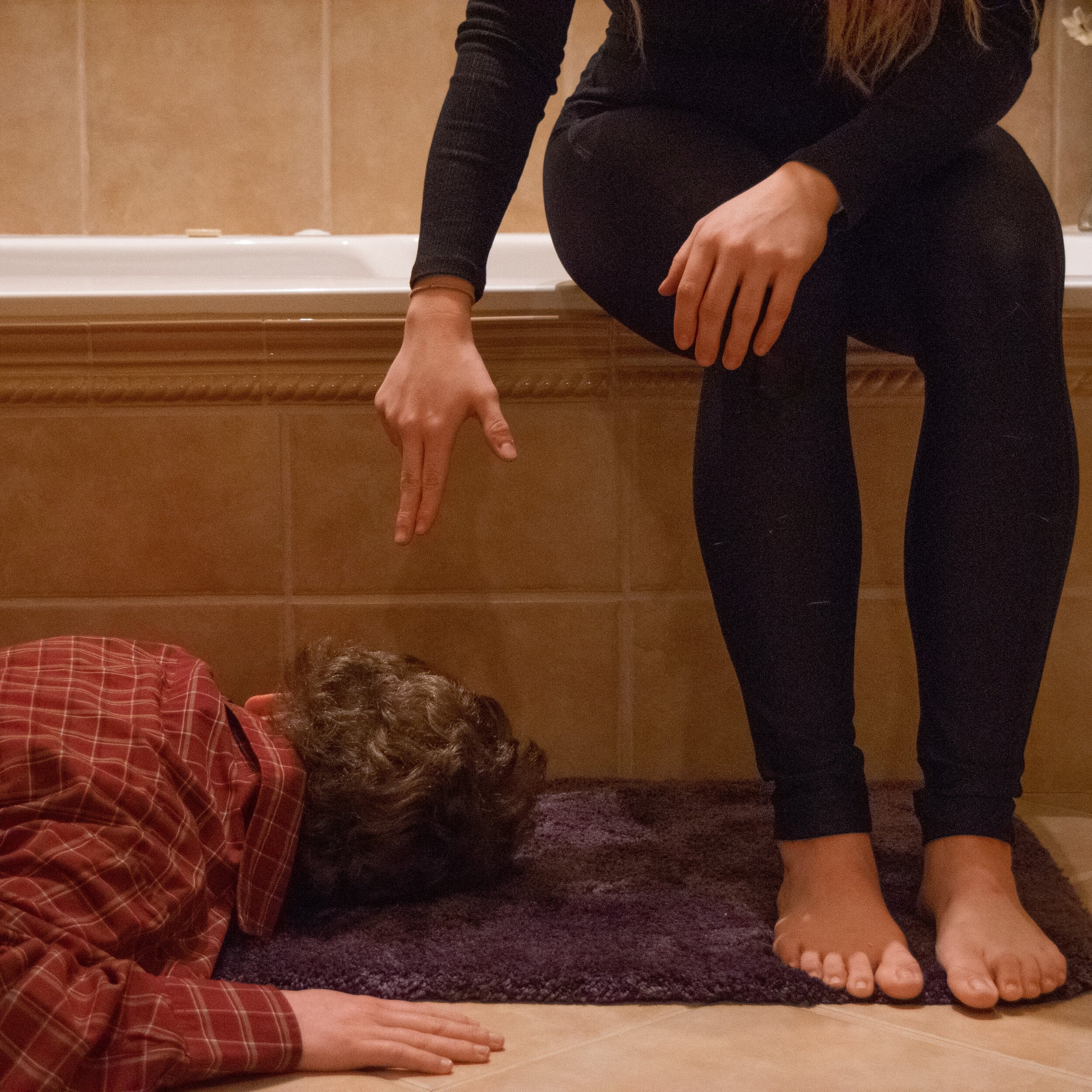In my series, “Love, Grandma,” I am creating staged self-portraiture as a way to explore mental illness. I put myself into the shoes of my late grandmother by recreating scenes that she described or did while having schizophrenic episodes. I focus primarily on gesture, symbols and lighting as methods to convey ambiguous narratives. My attempts to explore her perspective has allowed me to consider notions of personal space, identity and the connection, or lack thereof, of an individual to their surrounding world in a way that is both honest and theatrical.
By intentionally creating scenes in low light, I am tackling the darkness that mental illness can create in an individual; clarity appears doubtful while obscurity reigns as certain. My grandmother possessed a completely different perception of reality, hence why I chose to display my photographs in an unconventional manner. By suspending and angling my photographs, versus securing them flat against the wall, I present an uncomfortable yet accessible viewing platform in a “suspended reality”. Through the use of writing I have been able to better understand her perspective. This appears much like one might observe handwritten comments on the back of a keepsake photograph. The words are written in the first-person from a seemingly rational point of view, as I have become the subject who is trying to demonstrate an empathetic view point. The peculiarity of the scene, combined with the written phrases are intended to be simultaneously acceptable and upsetting. I want my narratives to remain open-ended, therefore, it is important for me to pay close attention to the recognizable and universal.

